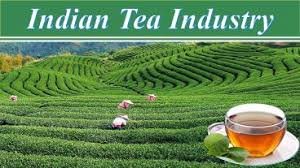
India’s tea industry is experiencing challenges reminiscent of the “dark phase” of 2002-07, calling for introspection and resilience.
Stagnant prices, oversupply, widening gap between demand and supply, and a “race to the bottom” for cheaper teas have been identified as major factors.
The tea industry suffered a drastic market slump during 2002-07 owing to certain regulations, falling demand, entry of cheaper teas from other countries into the Indian market, and dip in exports over quality concerns.
Tea prices have remained stagnant over the years except in 2020 when buoyancy in prices was noted due to the pandemic. Unable to keep pace with increasing input costs, many estates have shut, changed hands, or are surviving through subsidies from their group companies.
Oversupply leading to a significant imbalance between availability and consumption; concentration of market power among a few key players, and a decline in the quality of teas to make the beverage more affordable.
Measures for the Tea Board of India to consider:
1. Regulating tea waste sold in the domestic market at lower prices
2. restricting import of poor-quality teas
3. promotion of tea emphasising its health benefits
Regulating waste can lower supply by 15-20 million kg, and restricting import can further remove 30 million kg of low-quality teas.
Assam grows about 55% of the teas produced in India. India’s tea production has increased by 39% from 981 million kg in 2008 to 1,336 million kg in 2022.
It is projected that tea production in 2023 will be around 1,365 million kg, almost the same as in 2022.
India’s export till October 2023 was 182.69 million kg of tea, 2% less compared to that in 2022. Tea imports, on the other hand, increased from 27 million kg in 2021 to 30 million kg in 2022.
Comments (0)
Categories
Recent posts


Q5/ Section B, APSC Mains 2024 Essay - ...
29 Jul 2024
Satellite Town
21 Jul 2024
Q 1/Section A, APSC Mains 2024 Essay - ...
29 Jul 2024



